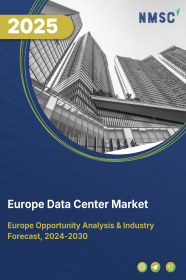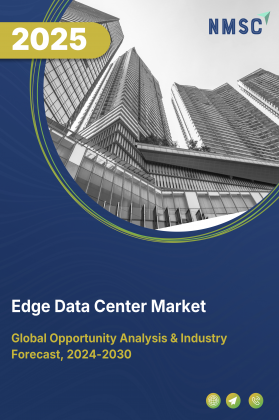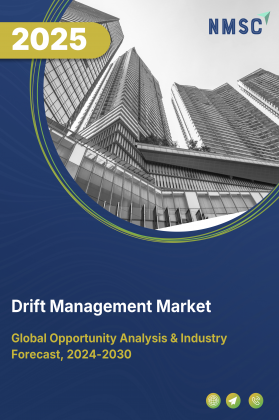
Europe Data Center Market by Infrastructure (Hardware, Software, and Services), by Type (Enterprise Data Centers, and others), by Data Center Rating (Tier I, and others), by Size (Small Data Centers, and others), by Power Capacity (<0.01 GW, 0.01-0.05 GW, 0.05-0.1 GW, 0.1-0.5 GW, and >0.5 GW), by Server Rack Density (<10kW, and others), by Data Center Redundancy (N+1, and others), by PUE Outlook (Less than 1.2, and others), and Others - Opportunity Analysis and Industry Forecast, 2024–2030
Industry: ICT & Media | Publish Date: 18-Sep-2025 | No of Pages: 345 | No. of Tables: 287 | No. of Figures: 232 | Format: PDF | Report Code : IC2433
Europe Data Center Market Overview
The Europe Data Center Market size was valued at USD 55.65 billion in 2023, and is predicted to reach USD 122.58 billion by 2030, at a CAGR of 11.9% from 2024 to 2030.
The data center, also recognized as the network infrastructure market, encompasses the planning, construction, operation, and maintenance of dedicated infrastructure for housing computing systems. It includes various elements such as servers, storage systems, and networking equipment, offering services such as cloud computing and connectivity solutions. Currently, the industry witness widespread adoption of cloud services, along with the emergence of edge computing to reduce latency.
Major trends include a focus on sustainability, heightened cybersecurity concerns, the integration of hybrid and multi-cloud approaches, and the impact of 5G networks. These trends highlight the industry's response to the increasing demand for scalable, efficient, and secure data processing and storage solutions in the era of digital transformation. According to the United States International Trade Commission, the data processing and storage market is expected to grow from USD 56 billion in 2020 to USD 90 billion by 2025.
Massive Hyperscale Investment and the Rise of AI are Fueling Unprecedented Demand for Advanced Infrastructure
The Europe data center market is experiencing a significant growth surge driven by massive investments from global hyperscale cloud providers. Companies like Amazon Web Services (AWS), Microsoft, Google, and Oracle are expanding their cloud regions, particularly in the core FLAP-D (Frankfurt, London, Amsterdam, Paris, Dublin) hubs, to meet the accelerating demand for cloud services. This expansion is compounded by the rapid adoption of artificial intelligence, which requires high-density, often liquid-cooled, data centers capable of handling GPU-intensive workloads. As enterprises across finance, retail, and manufacturing integrate AI into their core operations, the need for scalable, AI-ready facilities is becoming a primary market driver.
Continent-wide Digital Transformation and Strategic Connectivity Strengthen Europe's Position as a Global Digital Hub
The European Union's "Digital Decade" strategy is a key factor propelling the data center market forward. EU-wide initiatives aimed at improving digital public services, strengthening cybersecurity, and promoting enterprise cloud adoption are directly increasing the need for in-region data storage and processing. This is complemented by Europe's strategic geographical location and its growing network of subsea cables, which enhance connectivity with North America, Asia, and Africa. This improved global connectivity solidifies Europe's role as a critical digital gateway, attracting further investment and reinforcing its long-term market outlooks.
Intensifying Power Demands and Aging Grid Infrastructure Present Significant Scalability Challenges
Despite its strong growth, the European data center market faces a major hurdle related to power availability and grid infrastructure. The projected boom in data center capacity is expected to significantly increase energy consumption, placing immense strain on national grids, especially in core markets like London, Dublin, and Frankfurt. Securing the necessary power for large-scale hyperscale and AI facilities is becoming increasingly difficult, with lengthy permitting processes and grid limitations hindering development timelines. Unless substantial investments are made to modernize and expand energy infrastructure across the continent, power constraints could severely limit the market's growth potential.
Leadership in Renewable Energy Integration Creates a Path to Becoming the World's Premier Green Data Center Hub
Europe has a unique opportunity to position itself as the leading sustainable data center hub globally, thanks to its abundant renewable energy resources and strong regulatory push. There is a powerful trend from both governments and the private sector toward green energy, with operators increasingly signing Power Purchase Agreements (PPAs) to run their facilities on 100% renewable power. New EU regulations, like the Energy Efficiency Directive, are also set to mandate strict energy efficiency and sustainability standards for data centers. By leveraging its leadership in renewable energy, Europe can attract environmentally conscious investors and enterprise customers, creating a distinct competitive advantage and driving the next wave of market growth in green data centers.
Germany Holds the Dominant Market Share in Europe Data Center Market
The data center market in Germany experienced significant growth, driven by ongoing digital transformation efforts and the increasing demand for Industry 4.0, Internet of Things (IoT), cloud services, big data analytics, data security, and AI applications. Frankfurt am Main notably become one of Europe's leading hubs for network infrastructure, alongside London, Amsterdam, and Paris.
With 522 operational centers, Germany holds the highest number of such facilities in Europe, cementing its status as one of the largest markets in the region. This rising demand highlights Germany's crucial role in supporting the evolving needs of digital businesses across various sectors. Additionally, the expansion of major global companies, such as Alphabet Inc. and Alibaba Group Holding Ltd., is a significant factor driving the demand for data centers in Germany.
For example, Google recently invested USD 1.08 billion in a new cloud region in Berlin-Brandenburg, its second in Germany by 2030. This investment enhances digital infrastructure by offering services such as Compute Engine, Kubernetes Engine, and Cloud Storage.
The Berlin-Brandenburg region provides local cloud capacity to Google Cloud customers, enabling efficient scaling of workloads. This expansion aligns with Google Cloud's global network strategy, that includes 38 regions and 115 zones, further solidifying Germany's position as a key market for investments.
Denmark to Witness Substantial Growth in the Europe Data Center Market
Denmark's advanced digitalization and consistent demand for cutting-edge software and IT products make it a prime environment for the expansion of the data center industry. Ranking third among 130 economies in the World Economic Forum's "Network Readiness Index" in 2021, Denmark provides an ideal setting for developing and enhancing digital infrastructure, that in turn fuels the progress of the market sector.
Moreover, Denmark's commitment to achieving net-zero carbon emissions led to collaboration among prominent players to expedite the green transition of network infrastructure, thereby driving Europe data center market growth. Collaborative efforts, such as the net-zero innovation hub for network infrastructure involving Danfoss, Google, Microsoft, and Schneider Electric, underscore a shared dedication to sustainability and energy efficiency in the European market landscape, highlighting the crucial role of cloud computing in digital and green transformations.
Moreover, the growth of Denmark's market industry is further propelled by the influx of global corporations into the country, coupled with partnerships with local authorities. These collaborative endeavors attract international cloud providers, Internet businesses, AI ventures, and global Fortune 500 companies, enriching the network infrastructure ecosystem.
Noteworthy examples include Prime's 124 MW data center in Saeby, Denmark, designed to cater to international cloud providers and Fortune 500 companies, with a strong emphasis on sustainability and a net-positive environmental impact.
Such collaborations demonstrate the potential for network infrastructure to contribute positively to local communities while aligning with Environmental, Social, and Governance (ESG) goals, further solidifying Denmark's position as a key player in the global market landscape.
Competitive Landscape
The key players operating in the Europe data center industry include Equinix, Inc., Digital Realty Trust, Inc., NTT Global Data Centers, Global Switch, Vantage Data Centers, Iron Mountain Incorporated, CyrusOne, Inc., DATA4 Group, EdgeConneX, STT GDC, Keppel Data Centres, Telehouse, QTS Realty Trust, Inc., Amazon Web Services, Colt Data Centre Services, and others.
Europe Data Center Market Key Segments
By Infrastructure
-
Hardware
-
IT Hardware
-
Servers
-
Storage Systems
-
Networking Equipment
-
-
Power Infrastructure Hardware
-
Uninterruptible Power Supplies (UPS)
-
Generators
-
Automatic Transfer Switches
-
Power Distribution Units (PDUs)
-
-
Mechanical Infrastructure Hardware
-
Computer-Room Air Conditioners (CRAC/CRA Units)
-
Chillers
-
Racks
-
Cable Management Systems
-
-
Safety & Security Hardware
-
Fire Suppression Systems
-
Physical Security Systems (CCTV, access controls)
-
-
-
Software
-
DCIM & Monitoring
-
Automation & Orchestration
-
Backup & Disaster Recovery
-
Security Software
-
Virtualization Software
-
Analytics & Reporting Software
-
Other Software
-
-
Services
-
Planning & Professional Services
-
Site & Building Design
-
System/Infrastructure Engineering
-
Professional Advisory (compliance, energy audits)
-
-
Integration & Deployment Services
-
Electrical & Mechanical Installation
-
Commissioning & Acceptance Testing
-
-
Operation & Support Services
-
Preventive & Corrective Maintenance
-
Facilities Management / Remote Monitoring
-
Support Services (helpdesk, onsite SLA support)
-
-
Hosting & Managed Services
-
Colocation & Cloud Hosting Services
-
Virtual/Private Hosting Platforms
-
-
By Type
-
Enterprise Data Centers
-
Colocation Data Centers
-
Cloud Data Centers
-
Hyperscale Data Centers
-
Edge Data Centers
-
Micro Data Centers
-
Others
By Data Center Rating
-
Tier I
-
Tier II
-
Tier III
-
Tier IV
By Size
-
Small Data Centers
-
Med-sized Data Centers
-
Large Data Centers
By Power Capacity
-
<0.01 GW (Small)
-
0.01-0.05 GW (Medium)
-
0.05-0.1 GW (Large)
-
0.1-0.5 GW (Hyperscale)
-
>0.5 GW (Mega-campus)
By Server Rack Density
-
<10kW
-
10-19kW
-
20-29kW
-
30-39kW
-
40-49kW
-
>50kW
By Data Center Redundancy
-
N (No Redundancy)
-
N+1 (Single-fault tolerant)
-
N+2 (Dual-fault tolerant)
-
2N (Full duplication)
-
2N+1 (Concurrently maintainable + extra spare)
-
3N/2N+2 (Multi-backup fault tolerant)
By PUE Outlook
-
Less than 1.2
-
1.2 - 1.5
-
1.5 - 2.0
-
Greater than 2.0
By Design Outlook
-
Traditional
-
Containerized
-
Modular
By End User
-
Cloud Service Provider
-
Technology Provider
-
Telecom
-
Healthcare
-
BFSI
-
Retail & E-commerce
-
Entertainment & Media
-
Government
-
Energy
-
Others
By Country
-
Germany
-
France
-
Italy
-
Spain
-
United Kingdom
-
Russia
-
Sweden
-
Norway
-
Denmark
-
Netherland
-
Finland
-
Rest of Europe
Key Players
-
Equinix, Inc.
-
Digital Realty Trust, Inc.
-
NTT Global Data Centers
-
Global Switch
-
Vantage Data Centers
-
Iron Mountain Incorporated
-
CyrusOne, Inc.
-
DATA4 Group
-
EdgeConneX
-
STT GDC
-
Keppel Data Centres
-
Telehouse
-
QTS Realty Trust, Inc.
-
Amazon Web Services
-
Colt Data Centre Services
Report Scope and Segmentation
|
Parameters |
Details |
|
Market Size in 2023 |
USD 55.65 Billion |
|
Revenue Forecast in 2030 |
USD 122.58 Billion |
|
Growth Rate |
CAGR of 11.9% from 2024 to 2030 |
|
Analysis Period |
2023–2030 |
|
Base Year Considered |
2023 |
|
Forecast Period |
2024–2030 |
|
Market Size Estimation |
Billion (USD) |
|
Growth Factors |
|
|
Countries Covered |
12 |
|
Companies Profiled |
15 |
|
Market Share |
Available for 10 companies |
|
Customization Scope |
Free customization (equivalent up to 80 working hours of analysts) after purchase. Addition or alteration to country, regional, and segment scope. |
|
Pricing and Purchase Options |
Avail customized purchase options to meet your exact research needs. |

















 Speak to Our Analyst
Speak to Our Analyst

























